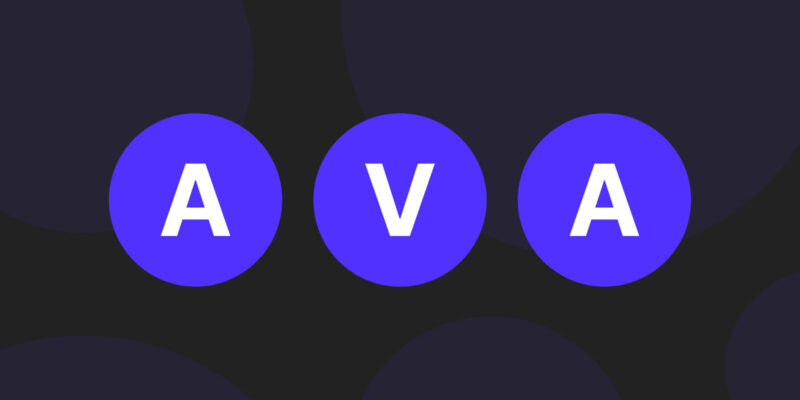One of the most irritating things about our brains is how smart and dumb they can be at the same time. How it can feel like we’re simultaneously being pulled in two totally opposite directions:
- Do you ever wonder why we get irrationally afraid of certain things despite knowing they’re not actually dangerous?
- Or why we have a hard time completing even simple tasks and projects, procrastinating again and again and again despite knowing that we’re only making things harder and more stressful on ourselves?
- Or maybe we continue some unhealthy habit like eating too much fast food despite knowing how unhealthy it is for us?
I certainly experience all of these dilemmas on a regular basis. And much of the time, I end up acting against my best interest.
But why? I’m a reasonably bright person with a great education and many resources at my disposal. Why do I keep doing things despite knowing they’re not in my best interest?
Unfortunately, I don’t have all the answers—by any means! But I do have an answer that may get us at least some of the way there. That may, in other words, help explain why we seem to get stuck, emotionally and behaviorally, despite knowing the answer.
In the rest of this article, I’ll walk through how we can use a tool from behavioral psychology called The Cognitive Model to better understand how the brain works (and how it can work against us). Then, we’ll apply it to some real-life situations and show how we can use this cognitive model to resolve some common stuck points many of us face in our lives.
The Cognitive Model
The human brain is an astoundingly complex thing—probably the most complex thing in the Universe. And while we aren’t even close to fully understanding how it works, we’re making some small steps in the right direction. One of the ways we’re doing this is through the creation and application of psychological models.
A model is a theory or best guess for how something works. Models are useful because you can use them to predict how something will work given a certain set of circumstances. Then you can compare the results to reality and see how close you got. Do this many times in a row, and if you continue to get pretty good results, you can trust that your model is a reliable indicator of how things will work in the future. Science!
In psychology, we have a good working model for how strong emotions come about and influence people. It’s called The Cognitive Model because there’s a particularly important role for thought or cognition in how we feel emotionally.
The Cognitive Model looks like this:
Event —> Interpretation —> Emotion —> Response
Doesn’t look too, scary, right?
Something happens (Event), we have some kind of thought about what just happened (Interpretation), which results in us feeling a certain way (Emotion), which nudges us to take some kind of action (Response).
That’s the generic version of the model, but here are a couple of specific examples:
- A blue Chevy cuts you off while you’re driving down the freeway (Event). The following thought speeds across your mind: “That jerk’s gonna kill somebody!” (Interpretation). You feel angry (Emotion). So you hit the gas in a valiant attempt to catch up to them, snap a photo of their license, and report them (Response).
- A thin dark line appears off in the distance on the trail ahead of you while you’re hiking in the woods (Event). The following thought speeds across your mind: “Ah, a snake!” (Interpretation). You’re feeling afraid (Emotion). You immediately turn around and start walking briskly back in the other direction (Response).
A key aspect of the model is that while the first three parts are largely automatic and outside of our control (things happen, thoughts pop into consciousness, and emotions emerge as a result), how we act is generally deliberate and under our control, even if it’s difficult.
We don’t have to punch the gas and chase down the blue Chevy, even though that’s our first instinct. Similarly, we could walk a little closer to the dark line on the trail and get a better look instead of turning around.
This distinction between the automatic and deliberate aspects of our psychology is important because it’s at the heart of the brain’s ability to learn and adapt.
Mental Mechanics
While much of what the brain “knows” is attributable to our genetic programming and inheritance, one of the remarkable aspects of the human brain is its ability to expand, modify, and even override much of its original programming in order to flexibly adapt to changing circumstances.
The cognitive model comes in to play here because the mechanism primarily responsible for how the brain continues to learn is the last step in the model—our responses, or how we act and behave.
When our brain notices something (Event), it makes an initial calculation about what that event means (Interpretation) and then creates a physical feeling (Emotion) which nudges us to do something in line with its initial interpretation.
What we do next (Response) either confirms or disputes the accuracy of the initial interpretation. Specifically, if we respond in the same “direction” that our emotion was pushing us toward, we confirm the initial interpretation and teach our brain that what it thought about the event is in fact true.
In the above examples, the responses were both in line with the brain’s initial interpretations and emotions: By punching the gas, we confirmed the interpretation that the driver of the blue Chevy was, in fact, a jerk and needed to be punished. By avoiding dark lines on trails while hiking, we confirm the brain’s initial interpretation that dark lines while hiking are snakes and therefore dangerous.
When we confirm our brain’s initial beliefs through our actions, the brain becomes more confident in its belief, which has implications for the future.
In terms of the above examples, the next time we’re cut off on the freeway, we’ll feel even angrier and be more likely to chase down the Chevy. And the next time we’re out hiking and see a dark line on the trail, we’ll feel even more afraid and be more likely to run away.
The brain is always making guesses about what is and isn’t true, and how we act in response to those guesses is the primary way the brain learns about the world.
But what if we had gone against our brain’s initial inclination? What if we had, for some reason, decided not to chase down the blue Chevy and just continued on at our same speed?
Because we didn’t treat the blue Chevy like an offender as our brain initially suggested, we would have taught the brain to be less confident in its interpretation that people who cut us off are law-flaunting jerks who deserve to be punished. Consequently, the next time we were cut off, the brain’s automatic interpretation and emotion would have been less intense and we would have been less likely to chase down the car as well as felt less angry.
In the case of the dark line on the trail while hiking, by approaching rather than avoiding it, we would be poking a hole in the idea that dark lines while hiking are dangerous (you probably wouldn’t approach something that you knew for sure was really dangerous, like a poisonous jumping viper!).
So the next time we were out hiking and saw a dark line on the trail ahead of us, our emotional reaction would be less intense and we’d be less likely to simply turn around and run out of fear.
If you take nothing else away from all that, it should be this: The brain is always making guesses about what is and isn’t true, and how we act in response to those guesses is the primary way the brain learns about the world.
The question is, what do we want our brains to believe?
Do we want our brains to believe that anyone who cuts us off on the freeway is a jerk and should be punished? Do we want our brains to believe that thin dark lines on hiking trails are always dangerous and to be avoided?
Probably not.
The driver of the blue Chevy could have been a student driver with a heavy foot, or a terrified husband on the way to the hospital with his wife going into labor in the back seat.
Similarly, more often than not, thin dark lines off in the distance while hiking are shadows or branches, not snakes. And even when they are snakes, the odds that they are extremely dangerous and should be immediately run away from are slim.
The basic problem is, while the brain is pretty smart, it’s far from infallible.
And by always acting in accordance with its initial assessment of things, we can end up reinforcing some pretty big misconceptions, often to our own long-term detriment as I’ll illustrate in the following example.
Josie’s Dog Phobia
Josie was a young client of mine who came into therapy with an intense fear of dogs. Several months prior, she had been attacked and bitten by a loose dog while walking in her neighborhood. Needless to say, it had been a harrowing experience for her. The problem now was that she “couldn’t go anywhere near dogs anymore” because she was afraid of being attacked again.
She described how she hadn’t been for a walk in her neighborhood for months, couldn’t go to parks anymore, and would cross to the other side of the street if she saw someone approach her on the sidewalk while walking their dog. She was even considering ending her relationship with her boyfriend because he had a pet lab of 10 years that she “couldn’t take” being around.
“Of course, I know this is all ridiculous,” she told me. “I know that most dogs aren’t dangerous, but I just can’t help myself. I feel so afraid whenever I see one.”
As I’ll try to explain, Josie’s real problem actually has nothing to do with dogs per se and everything to do with her response to how she feels when she’s around them.
After she was attacked, her brain very understandably became a little more cautious of dogs. You can imagine how the first time it noticed a dog (Event) after the attack, its initial assessment was probably that something similar might happen again (Interpretation: “Dogs are dangerous!”), which lead predictably to a feeling of fear (Emotion). And in order to avoid a similar outcome, that fear encouraged Josie to avoid (Response) what the brain guessed to be another potentially dangerous situation.
And that’s exactly what happened. The first time she went out for a walk after her attack, she saw a neighbor walking a dog on her street. She instantly felt very afraid and immediately turned around and went back into her house (and consequently felt very relieved).
The problem with Josie’s very understandable response is that it was confirming her brain’s inaccurate belief that dogs are dangerous. So the next time she was out in public and saw a dog, her brain was even more confident in its assessment of danger when a dog was encountered, meaning Josie felt even more afraid.
And the more fear she felt, the more strongly she wanted to avoid the situation in order to get relief. Repeat this cycle a few times, and you’ve got yourself a good old fashioned phobia.
The only way for Josie to truly unlearn her irrational belief in the dangerousness of all dogs was for her to begin acting as though not all dogs are dangerous.
Like all anxiety disorders, a phobia is a disorder of learning. Josie didn’t have a chemical imbalance that lead her to be irrationally afraid of dogs all of a sudden after being attacked.
Instead, she developed a habit of instantaneously avoiding dogs any time she encountered one and got an initial message from her brain that it was dangerous. Her tendency to instantly avoid any dog-related situation got rewarded and reinforced by the relief from anxiety she felt each time she “got away.”
But in the long run, this habit reinforced a very strong and incorrect belief that all dogs are dangerous. Which is why she ended up in therapy.
For Josie, the only real solution was to unlearn this belief that all dogs were dangerous and replace it with a new one—sometimes dogs can be dangerous but usually not. And because the brain’s primary teacher is our behavior, the only way for Josie to truly unlearn her irrational belief in the dangerousness of all dogs was for her to begin acting as though not all dogs are dangerous.
So I worked with Josie to gradually force herself to encounter dogs without initially agreeing with her brain’s assessment that it was dangerous and to simply remain in the situation despite feeling anxious and afraid.
Do this enough times (see dog, be afraid, refrain from running away) and the brain begins to doubt itself: “Hmmm… A dog walked toward us, we just remained where we were, it sniffed our foot a couple times and then kept walking… Maybe dogs aren’t always dangerous…?”
The key is, the brain only gets a chance to learn this new information if we refrain from responding right away to its initial suggestion. The difficult part about it, of course, is tolerating all that uncomfortable anxiety.
In short, by withholding or changing our initial response, and tolerating the often uncomfortable emotion and feelings that go along with it, we allow our brains the possibility of learning new information and developing more accurate theories about the world.
Fear and Desire
Most of us don’t have dog phobias or any kind of major anxiety disorder. But we can still fall into the same trap of reinforcing an incorrect belief our brain has come up with because we want to avoid an uncomfortable feeling or emotion:
- We avoid telling our spouse or partner how we really feel because we’re afraid they’ll take it the wrong way and get upset.
- We keep ourselves over-scheduled and busy all the time to avoid the sadness that comes from reflecting on how our life hasn’t turned out like we wanted it to.
- We procrastinate on getting started on a project because we don’t want to feel the embarrassment or shame of having to ask for help or clarification.
- We turn down opportunities to meet new people and make friends because we’re worried about being judged.
- We drink a little more than we should in the evenings to pass out quickly and avoid having to lay awake alone with our thoughts in bed.
The list could go on, but the point is, there are many aspects of our lives—big and small—where we may be unintentionally teaching our brain lessons that are both untrue and, in the long run, unhelpful.
- When we avoid talking about how we really feel, we reinforce the theory that people always get upset when we tell difficult truths.
- When we overbook our lives to avoid sadness or regret, we reinforce the idea that sadness is bad and to be avoided, which of course leads to even more distraction-oriented over-scheduling.
- When we procrastinate on difficult projects and avoid asking for help, we reinforce the belief that asking for help is bad and leads to embarrassment.
You can see how behaviors aimed at avoiding difficult feelings often lead to vicious cycles.
And while it briefly is relieving to escape having to confront those feelings, they only end up stronger in the long run when we strengthen the inaccurate beliefs that are producing them.
To take the 30,000 foot perspective, it’s worth asking the following question from time to time:
How many of the bad habits or stuck points in our lives are maintained or exacerbated by behaviors aimed at avoiding uncomfortable feelings?
When we think about the brain as a learning machine (which is what the cognitive model tries to do), and our own behavior as its most influential teacher, I think it goes a long way toward explaining the age-old problem of why we have such a hard time doing what’s ultimately in our best interest. And that is, much of the time—if we’re honest with ourselves—our behaviors are really aimed at how we feel rather than what we genuinely want.
We spend an astonishingly high percentage of our time avoiding emotional discomfort, ultimately at the expense of going after what we genuinely want. All because the short-term benefit of avoiding discomfort, has the long-term consequence of teaching and reinforcing untrue beliefs.
If we’re going to break out of the cycle, we have to start somewhere. And I think we could do worse than use the cognitive model to develop a habit of pausing before any emotionally-driven response and ask ourselves a simple question:
What will this teach my brain?





11 Comments
Great article! Thanks for taking the time to write it
You bet, Roy—thank you!
Enjoyed reading it. Thank you for sharing Nick
Thank you 🙂
This is a great article and its gives me a great topic of discussion for my next podcast episode. Thanks for writing 🙂
Glad I could help with the podcast 🙂
Thanks for this article. It is helpful in my own learning of beating my anxiety.
Glad it was helpful, Mike!
I really enjoy your articles, Mr. Wignall. My only real issue with reading these is the lack of scholarly peer-reviewed articles to back up your claims. They make sense, sure, and they’re very well written, but I always find it hard to 100% concede with articles stating no proof for their information. Perhaps you could let your readers know where you got your information? Thank you so much. I’ve bookmarked your page, and I appreciate all your hard work in the field of making people’s lives more tolerable and pleasant. Keep being amazing. Glad to see another great mind in New Mexico! I’m stuck here in Clovis. Thank you again.
Sarah,
Thank you so much for the thoughtful comment. I very much appreciate the compliments as well as the suggestion!
When I first started writing I did include more research in my pieces but I actually got quite a bit of feedback that they made the articles too dense and difficult to read. As a result, I scaled that back considerably.
But perhaps, as you suggest, I’ve swung a little too far in the other direction. I will definitely think on this and see if I can incorporate more research support without making it considerably less accessible.
I really appreciate good feedback like this so keep it coming!
And glad to know I have some local NM readers 🙂
I have a similar experience with phobias (though I approached it from a different perspective) and am trying to find someone who wants to get a PhD to take it and do the research to back it up. Anecdotal evidence is great for illustration but it is not evidence.